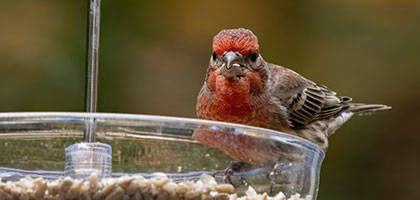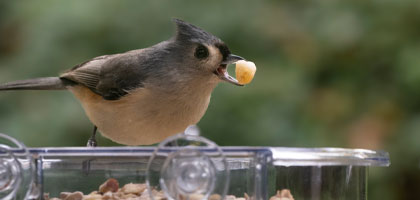Choosing the Best Suet Holder for Birds
Choosing the right suet holder for birds can be a game-changer. It can attract a variety of bird species to your garden, providing endless bird-watching opportunities.
But how do you choose the best suet holder?
This guide will help you navigate through the myriad of options available. We'll discuss different types of suet holders, materials, and designs that deter pests.
We'll also delve into the importance of suet holder placement and capacity. Plus, we'll touch on weather resistance, durability, and maintenance.
By the end of this guide, you'll be well-equipped to make an informed decision. Let's dive in and explore the world of suet holders for birds.
Understanding Suet and Its Importance for Birds
Suet is a high-energy bird food made from animal fat. It provides essential nutrients, especially during the winter months when food is scarce. This fat-rich food source is perfect for birds needing extra energy.
Birds like woodpeckers, nuthatches, and chickadees are particularly attracted to suet. It helps them maintain body heat in cold weather and supports their active lifestyles. Offering suet can significantly increase the variety of birds visiting your yard, enhancing your bird-watching experience.
Types of Suet Feeders
Choosing the right suet feeder starts with understanding the available options. Each design caters to different bird species and feeding behaviors. Familiarizing yourself with these feeder types can help attract a wide array of birds to your garden.
Cage-style Suet Feeders
Cage-style suet feeders are popular because of their simplicity. These feeders have small cages that hold suet cakes securely. They are versatile, accommodating various bird sizes while limiting access to pests.
Tail-prop Suet Feeders
Tail-prop suet feeders are specifically designed for birds like woodpeckers. These feeders feature an extended platform for birds to brace their tails against while eating. This design mimics natural feeding positions, making it easier for woodpeckers to enjoy the suet.
Platform Suet Feeders
Platform suet feeders provide an open space for birds to perch and feed. They can accommodate suet balls, pellets, or cakes, offering flexibility in feeding options. This feeder type attracts a diverse range of birds, including bluejays, orioles, and cardinals.
Material Matters: Wood, Plastic, or Metal?
The material of a suet holder greatly impacts its performance and longevity. Wooden suet holders offer a natural look that blends well into garden settings. However, wood can weather quickly unless it's treated and maintained properly.
Plastic suet holders are lightweight and often more affordable. They require little upkeep but may not withstand harsh weather as well as other materials. On the other hand, metal suet holders are highly durable and resistant to the elements. They are ideal for areas with extreme weather conditions, offering robust protection against squirrels and raccoons.
Design Features to Deter Pests
An effective suet holder should minimize visits from unwanted guests like squirrels and raccoons. Look for designs with built-in baffles or weight-sensitive perches to keep pests at bay. These features make it difficult for non-bird wildlife to access the suet.
Models with locking mechanisms can also add a layer of security. This feature ensures that the suet stays in place, reducing spillage and waste. By selecting a suet holder with specific pest deterrent designs, you create a safer feeding space for your feathered visitors while preserving your bird food supplies.
Placement and Accessibility for Birds
Choosing the right spot for your suet holder can greatly influence its success. Position it away from windows to prevent collisions, a critical safety measure for bird health. Ensure it's visible yet secure, offering birds a safe landing.
Accessibility is paramount in attracting diverse species. Aim to hang the suet holder at a height reachable for both large and small birds. Adjust the distance from branches to make it easy for birds to perch comfortably, enhancing the likelihood of frequent visits to your garden.
Suet Holder Capacity: Size and Shape Considerations
Suet holder capacity plays a crucial role in attracting the right avian visitors. Larger suet holders are ideal for feeding multiple birds at once, reducing the need for constant refills. They can support the weight of more sizable birds like bluebirds and cardinals, making them a suitable choice for diverse bird feeding.
The shape of the suet holder matters, too. Rectangular or square shapes accommodate standard suet cakes, whereas round designs might fit suet balls or pellets better. Carefully selecting the size and shape ensures your suet holder meets the feeding needs of your local bird population.
Weather Resistance and Durability
Choosing a suet holder with excellent weather resistance is vital for its long-term functionality. Opt for materials like metal or treated wood, which can withstand rain, snow, and strong sunlight. This ensures that the suet remains protected from the elements, maintaining its quality for the birds.
Durability is another key factor to consider. A sturdy suet holder prevents damage from wind or even the persistence of enthusiastic visitors like squirrels. Investing in a robust, weather-resistant suet holder minimizes replacement costs, while ensuring reliable bird feeding throughout various seasons. This is crucial for supporting local bird populations effectively.
Cleaning and Maintenance
Maintaining a clean suet holder is essential for bird health. Regular cleaning prevents the spread of diseases that can harm birds. Choose a suet holder that is easy to disassemble for thorough cleaning.
Look for designs with smooth surfaces, which allow for quick and hassle-free washing. Use mild soap and water to clean the holder, ensuring no residue is left behind. Regular maintenance not only prolongs the life of the feeder but also keeps it inviting for a variety of bird species. This simple routine can enhance your bird feeding experience by attracting more winged visitors.
Attracting Specific Bird Species
Different birds have different food preferences and feeder requirements. Choosing the right suet holder can help attract a variety of birds to your backyard. Consider species-specific needs when selecting your feeder.
Here are some birds and their preferences:
- Woodpeckers, Bluejays, and Chickadees: These birds enjoy suet cakes with nuts and seeds.
- Orioles and Cardinals: They prefer suet mixed with fruit or berries.
- Finches and Small Birds: Look for feeders that accommodate suet pellets and tiny seeds.
By catering to these preferences, you can create a vibrant bird-watching environment. This thoughtful selection will entice both common and unique bird species to visit your suet holder regularly.
Conclusion: Making the Right Choice
Choosing the right suet holder involves weighing various factors. Consider bird species, feeder types, and design features to deter pests. A suitable suet holder contributes to a thriving bird population and a lively backyard.
With knowledge of materials, designs, and bird preferences, you can make an informed choice. Whether catering to woodpeckers or finches, the right suet holder enhances your bird-watching experience. Embrace this opportunity to support local wildlife and enjoy the serenity birds bring to your garden.




